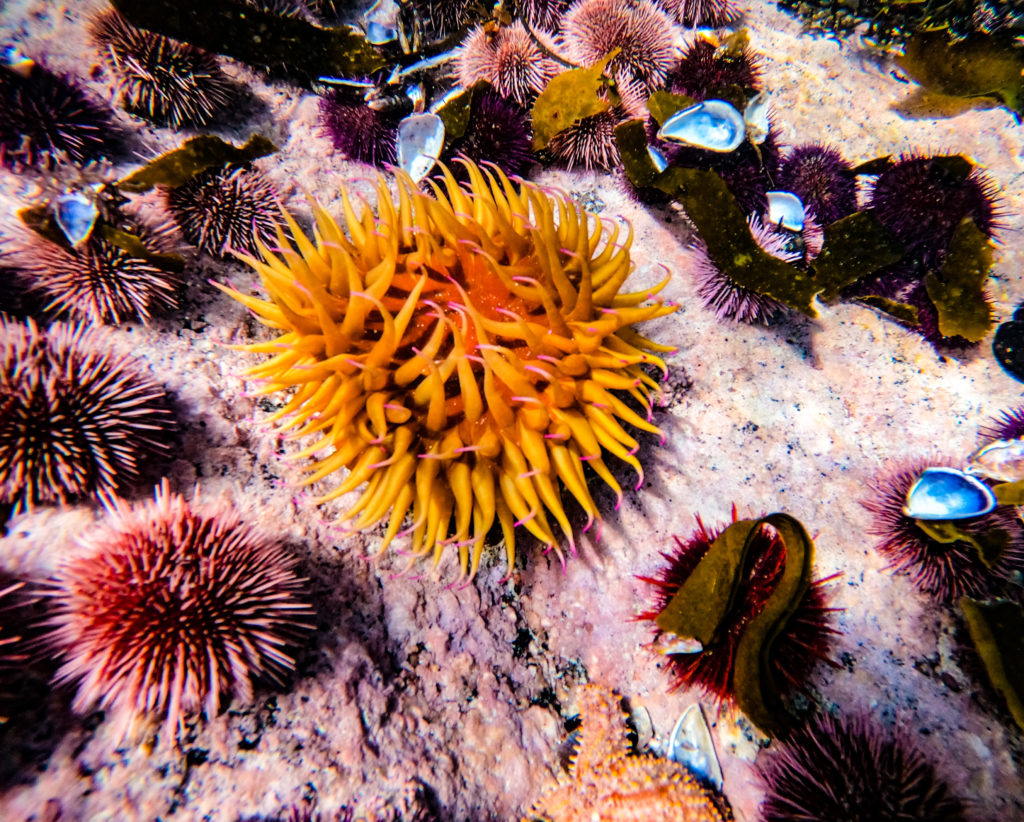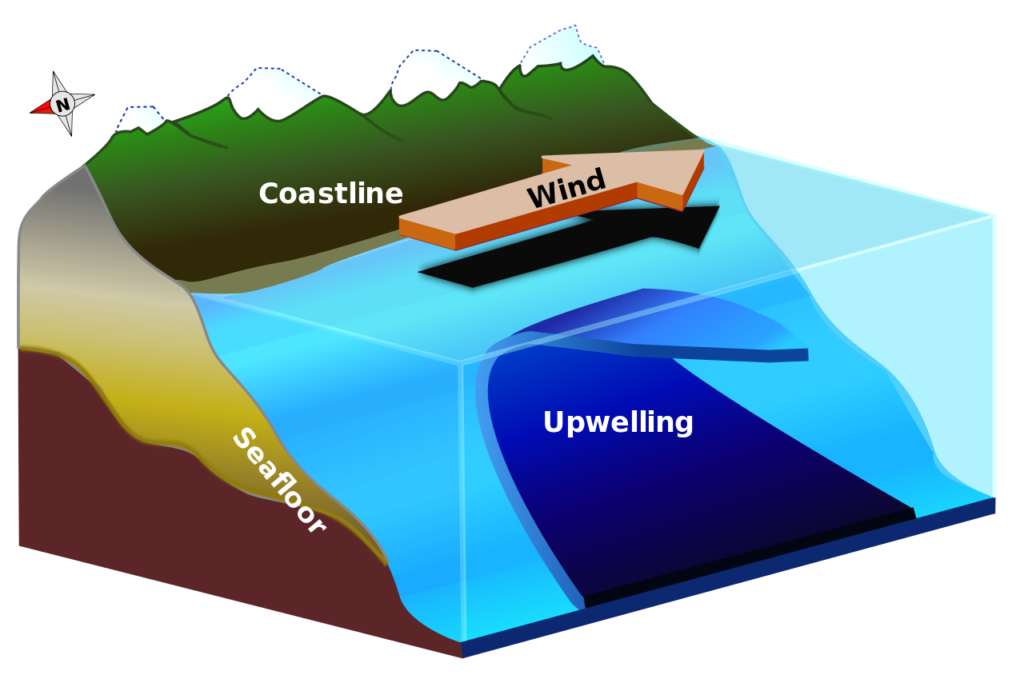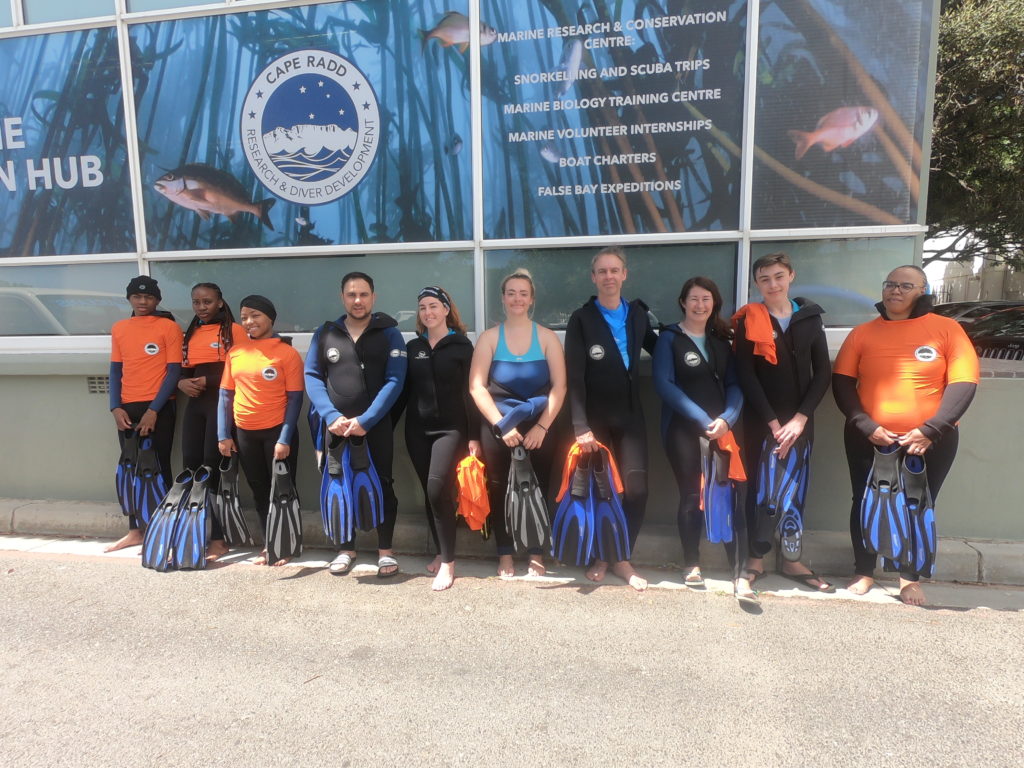False bay is home to a variety of diverse species. From sharks, whales, dolphins and seals to smaller fish, octopus, star fish, and nudibranchs. The vast amount of life that can be observed here is all thanks to the unique environment of the false bays waters which is an ideal habitat for several reasons. Upwelling is a phenomenon which occurs here and is one of the main reasons for the abundance of organisms along the South African coast, as south-east winds push the surface layer of water north-west along the shore, the landmass means this water that’s pushed away needs to be replaced by deep, cool, nutrient dense water, drawn up from the deep. The cold clear water provides marine snow, dead organisms, fallen food, nitrates and phosphates, these nutrients supply the food chain and support an abundance of life. Phytoplankton thrive on these nutrients, bloom here and create food for zooplankton, predatory zooplankton, filter feeders and predatory fish.

Currents have a large impact on the life that can be found here, the cold Benguela current in the Atlantic ocean, supports life such as schools of silver fish and larger species such as whales and dolphins, and the warm Agulhas current in the Indian ocean, supports tropical species, the meeting and mixing of these two oceans provides a unique environment in false bay which can be inhabited by many organisms. Not only this but Kelp forests thrive in these conditions and are ideal habitats which provide protection to a vast amount of life.

Unique biodiversity in False Bay includes
Nudibranchs, small sea slugs which can be found displaying bright colours to warn predators they are toxic. Nudibranch is latin meaning naked gills or lungs, this is because these creatures lungs are on the outside of their backs.
The seven gill cow shark Notorynchus cepedianus, this prehistoric looking shark has not changed or adapted appearance for millions of years, fossils of 7 gill sharks showing the same structures have been dated back to 190 million years ago.

Endemic species of sharks, mud snails, urchins, are extremely important for maintaining the growth of the kelp forests, bristle-stars, gurnards, mantis shrimp cuttlefish. Mantis shrimp cuttlefish contain chromatophore cells that allow them to change the texture and colour of their skin depending on behaviour, for example to camouflage or warn off potential predators and even to communicate.
Diving and/or snorkelling here is a great way to find these species and many divers enjoy discovering and photographing these strange yet beautiful creatures.

2 Comments
Venture out with Cape RADD: Join our Eco-Trips! - Cape RADD · October 10, 2023 at 3:49 pm
[…] as a testament to the wonderful diversity the world has to offer. This is precisely what makes it a unique site to visit. Here at Cape RADD, we are inviting you to step into a world of eco-travel that goes […]
Champions for Hope! Cape RADD welcomes Dr Sylvia Earle - Cape RADD · March 28, 2024 at 9:43 am
[…] of the False Bay Hope Spot. Embarking on a journey to spotlight the extraordinary beauty and biodiversity that graces this remarkable region. Fast forward to the 10th of February 2024, we welcomed […]